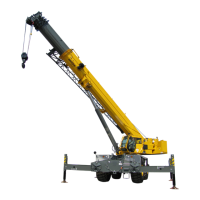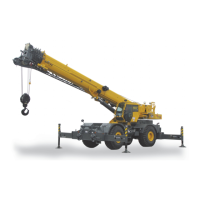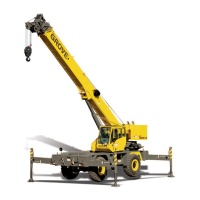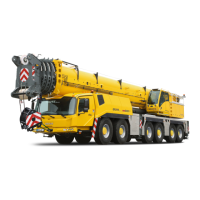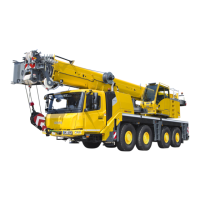INTRODUCTION RT9130E-2 OPERATOR MANUAL
1-12 Published 3-1-2018, Control # 559-03
• When replacing fixed length cable assemblies (e.g.
pendants) having permanently attached end fittings use
only pre-assembled lengths of wire rope as supplied
from Manitowoc. Do not build lengths from individual
components.
• Replace an entire wire rope assembly. Do not attempt to
rework damaged wire rope or wire rope ends.
• Never electroplate wire rope assemblies.
• Do not weld any wire rope assembly or component
unless welding is recommended by the wire rope
manufacturer. Welding spatter shall never be allowed to
come in contact with the wire rope or wire rope ends. In
addition, be sure that the wire rope is not an electrical
path during other welding operations.
• Wire ropes are manufactured from special steels. If
heating a wire rope assembly is absolutely necessary for
removal, the entire wire rope assembly shall be
discarded.
• On systems equipped with two or more wire rope
assemblies operating as a matched set, they shall be
replaced as an entire set.
• Do not paint or coat wire ropes with any substance
except approved lubricants.
• Measure the rope’s diameter across crowns (1) of the
strands when determining if rope has become damaged
(Figure 1-5).
Wire Rope Inspection (Running Ropes and
Pendant Cables)
Wire rope should be inspected frequently/daily and
periodically/yearly in accordance with the following
information excerpted from a National Consensus Standard
as referenced by Federal Government Agencies.
Recommended inspection intervals may vary from crane to
crane and may vary based on environmental conditions,
frequency of lifts, and exposure to shock loads. The
inspection time intervals may also be predetermined by state
and local regulatory agencies.
NOTE: Wire rope may be purchased through Manitowoc
Crane Care.
Any deterioration observed in the wire rope should be noted
in the equipment inspection log and an assessment
concerning wire rope replacement should be made by a
qualified person.
Keeping Records
A signed and dated report of the wire rope’s condition at
each periodic inspection must be kept on file at all times. The
report must cover all inspection points listed in this section.
The information in the records can then be used to establish
data which can be used to determine when a wire rope
should be replaced.
It is recommended that the wire rope inspection program
include reports on the examination of wire rope removed
from service. This information can be used to establish a
relationship between visual inspection and the rope’s actual
internal condition at the time of removal from service.
Frequent Inspection
A frequent daily visual inspection is recommended for all
running ropes in service. This inspection should be made on
all wire rope which can be expected to be in use during the
day’s operation. This inspection should be used to monitor
progressive degradation and to discover severe damages
necessitating wire rope replacement such as:
• Distortion, kinking, crushing, un-stranding, bird caging,
reduction of diameter, etc.
• General corrosion.
• Broken or cut strands.
• Number, distribution and type of broken wires.
• Evidence of core failure.
• End fitting wear/abrasion.
Pay particular attention to areas of the rope where wear and
other damage is likely to occur:
- Pick-up Points: Sections of wire rope that are
repeatedly stressed during each lift, such as those
sections in contact with sheaves.
- End Attachments: The point where a fitting is
attached to the wire rope or the point where the wire
rope is attached to the drum.
- Abuse Points: The point where the wire rope is
subjected to abnormal scuffing and scraping.
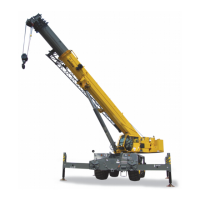
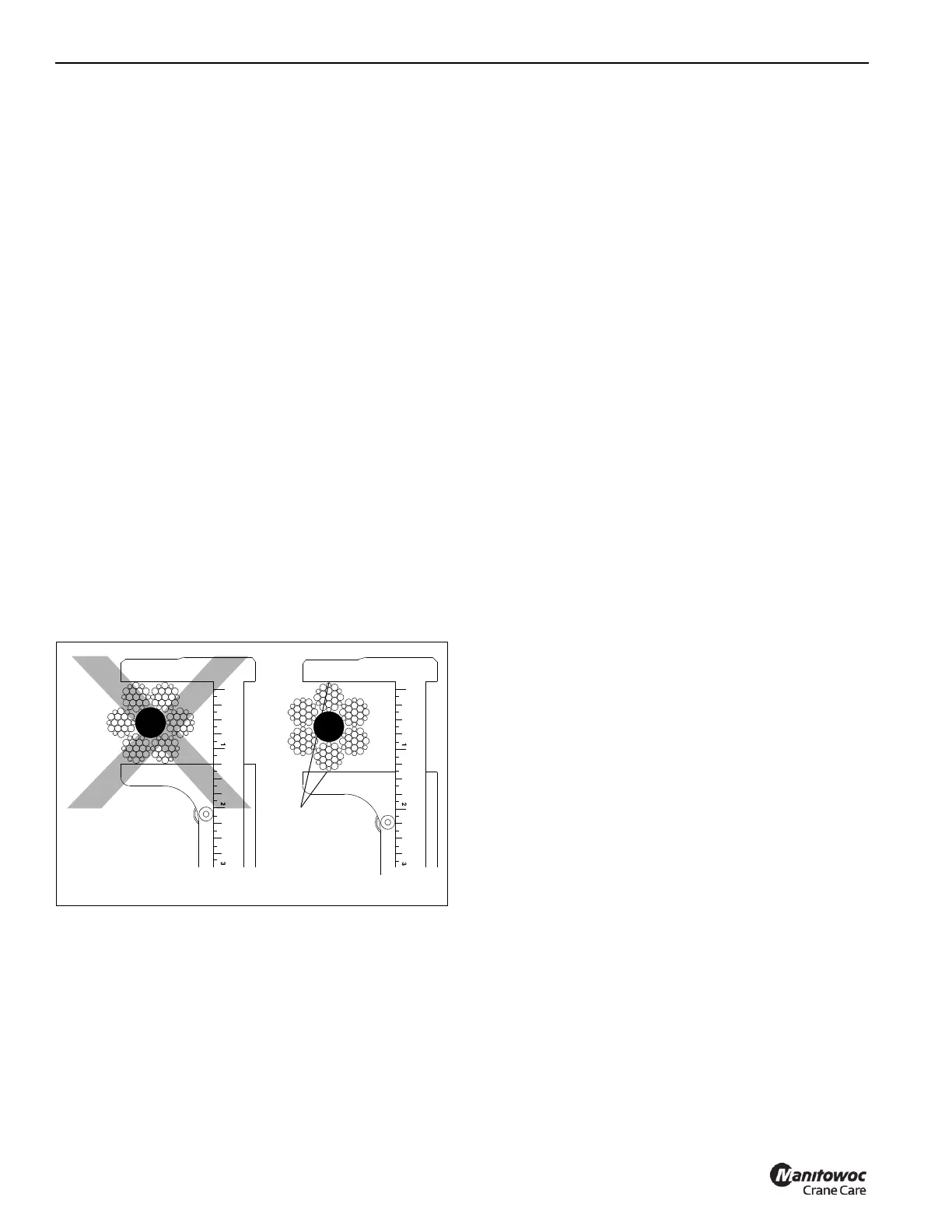